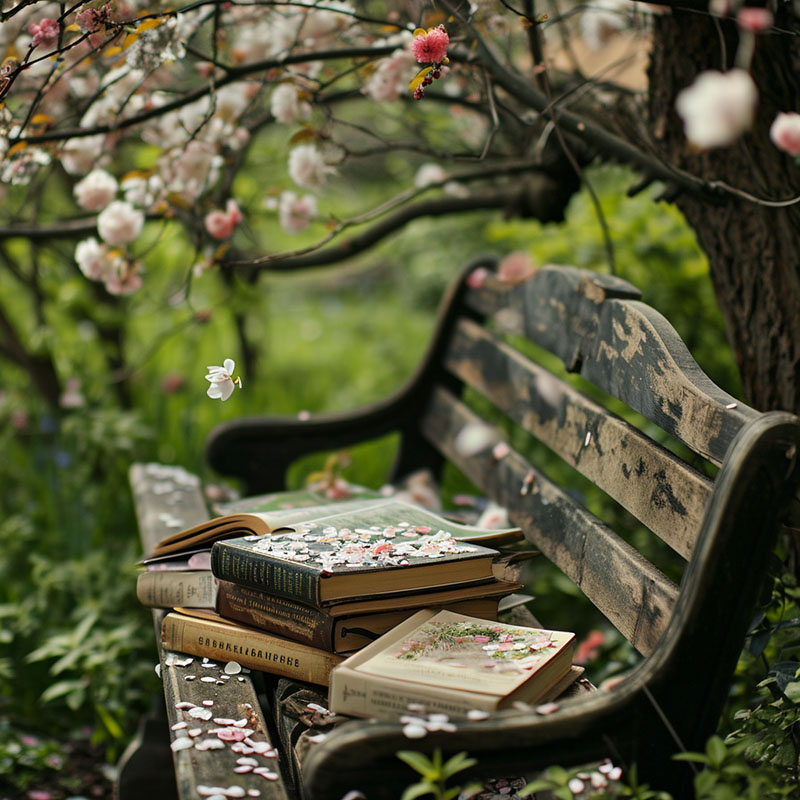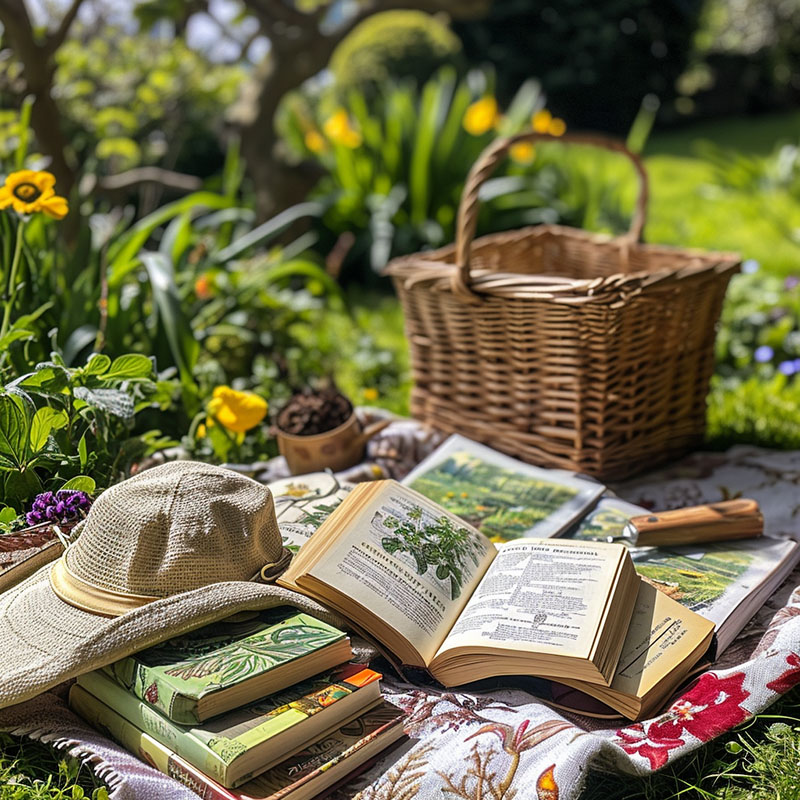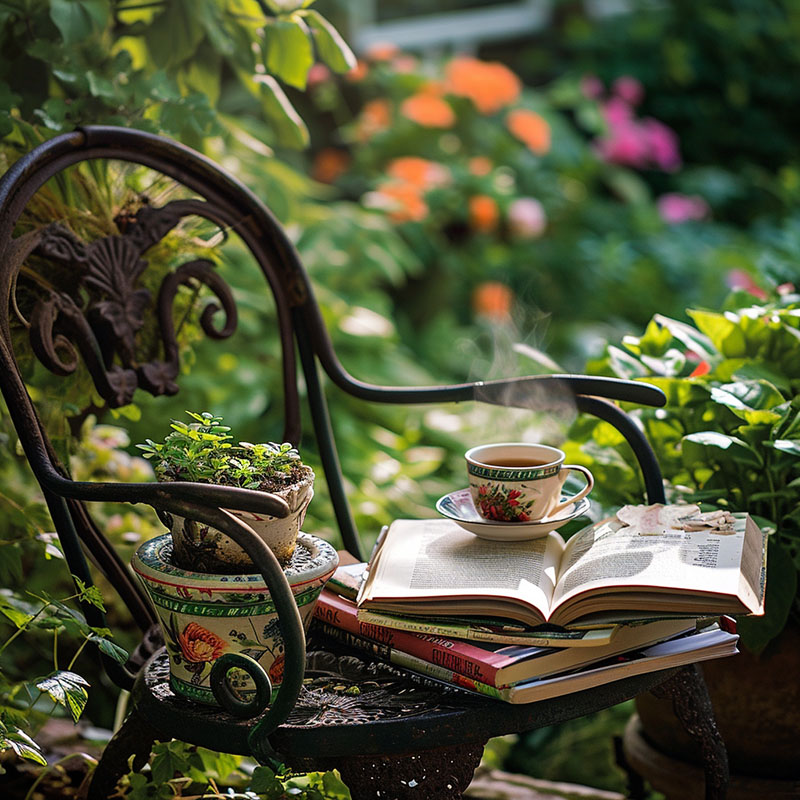
The Well-Tended Perennial Garden: Planting and Pruning Techniques, by Tracy DiSabato-Aust - Boston Globe, Years Best Garden Books, December 3, 1998: This is the book of the year for anyone who gardens with perennials. Organic Gardening, January/February 1999 Hands-on advice that gardeners of all experience levels will find valuable. Her writing style is conversational, and it is uncanny how she has anticipated each question that occurs to you. My shelves are heavy with books about perennials but none containing as much practical advice useful for the home gardener as well as the professional installer of borders. This is the best book ever on the maintenance of perennials, with detailed discussions of deadheading, pinching, disbudding and pruning.
Armitage's Garden Perennials: A Color Encyclopedia, by Allan M. Armitage - Armitage (horticulture, U. of Georgia-Athens) provides an encyclopedic listing of readily available garden perennials, with a few unusual species thrown in. Narrating the volume in a personable but opinionated voice, Armitage also includes detailed color photographs; in some cases multiple photos of a single species or cultivar in different seasons and settings. In the world of horticulture, Armitage stands out as an authoritative voice that gardeners depend on for guidanceWith its Accessible writing style, abundant color photographs an final section listing plants suggested for specific conditions for purposes, Armitages latest work should be considered an essential addition to gardening collections. Susan McBride, National Gardening, March 2000 With 1,400-plus color photos, horticultural depth and breadth, and delightfully personal prose by a renowned expert in herbaceous perennials, this is my first-round pick. John E. Bryan, Gardening Newsletter, March 2000 Essential for those designing perennial borders.
Dirr's Hardy Trees and Shrubs: An Illustrated Encyclopedia by Michael A. Dirr - A first-class source on the very best garden trees and shrubs. Dirr, a horticulture professor at the University of Georgia, has spent more than 25 years photographing trees and shrubs. For this volume, 1,600 of his color photographs were used to illustrate 500 species of U.S. northern trees and shrubs, suitable for zones 3 to 8 of the U. S. Department of Agriculture Hardiness Zone Map.
The Explorer's Garden: Rare and Unusual Perennials by Daniel J. Hinkley - If, like so many other gardeners the world over, you're enamored of Dan Hinkley's Heronswood Nursery catalog, you'll love the Explorer's Garden. Heronswood is a wildly successful nursery in Kingston, Washington, that offers many of the most beautiful and unusual plants available anywhere. My guess is that once The Explorer's Garden is read through for pleasure, it will be used over and over again as a supplement to the catalog, as it thoroughly describes the plants Hinkley offers at Heronswood, and offers information on how best to grow them. The Explorer's Garden is part sheer adventure, part the story of Hinkley's intense love and appreciation for the flora of Planet Earth. While fascinating for the botanist with its tales of plants growing in their native habitats at the far corners of the world, The Explorer's Garden also satisfies the gardener by emphasizing which plants are most garden-worthy. Out of the many masterworts (Astrantia) now available, Hinkley tells us that the cultivar known as "Margery Fish" or "Shaggy" is one of the best of the lot. He sorts through the virtues of the many hardy geraniums, distinguishing G. sylvaticum "Amy Doncaster" for its deep-blue upturned flowers with white eyes; he calls G. phaeum exceptional for its striking, purple-blotched foliage. This is just the kind of information gardeners need to know. We may grow plants better by understanding from whence they hail, but it is experienced guidance in choosing amongst the hosts of available plants that keeps us reading, notepad to hand.
The Illustrated Encyclopedia of Orchids, edited by Alec Pridgeon - 1,100 stunning orchids, illustrated and described This large and beautiful volume is aimed at a broad audience, from the flower lover with a casual interest in orchids to the committed enthusiast and professional. It encompasses a wide spectrum of orchid genera and over 1,100 species and hybrids commonly in cultivation. The introductory section guides the reader to a general understanding of orchid habitats, distribution, classification, hybrids, pollination, cultivation, and conservation. The heart of the book, an alphabetical "Orchids A-Z" section, includes descriptions, taxonomy, names and synonyms, geographic distribution, notes on culture, and hundreds of fabulous color photographs.
Clematis: The Genus: A Comprehensive Guide for Gardeners, Horticulturists and Botanists, by Christopher Grey-Wilson - From a long tenure at the Royal Botanic Gardens-Kew and books on Cyclamen and Poppies, the Ph.D. editor of the Alpine Garden Society journal turns his authoritative green thumb to the 297 garden cultivars and still found only in the wild clematis species. Includes global distribution maps; selection, care and propagation tips; some 100 color photos sure to entice gardeners and scientists alike; and a glossary

Botany for Gardeners: An Introduction to the Science of Plants, by Brian Capon - A readable introduction to botany for non-scientists How do plants grow? What exactly is photosynthesis? How did plants evolve and how do they adapt to environmental stress? What does each part of a flower do? How do plants reproduce and pass on their genes? This highly readable introduction to how plants work answers all these questions and more, always looking at botany from a gardener's point of view. Capon explains the structure and function of plants in clear, understandable language, including and defining all the relevant scientific terms. The book introduces readers to cell structure and function, plant growth processes, the many ways plants adapt to protect themselves from predators and the environment, and how plants meet their basic needs for food and water. Photosynthesis, reproduction, and the aging process are also explained, and the fascinating processes necessary for reproduction and transmission of genes are discussed in detail. Excellent color photos, line drawings, and diagrams accompany the lucid text. Botany for Gardeners never ceases to receive fan mail from grateful plant lovers who now look at plants in a whole new way.
The Color Encyclopedia of Ornamental Grasses: Sedges, Rushes, Restios, Cat-tails, and Selected Bamboos, by Rick Darke - Much has changed in the role and use of ornamental grasses over the past 100 years. Whereas turn-of-the-century gardeners had perhaps a dozen perennial grasses to choose from, today's gardeners have hundreds. Ornamental grasses now embody a huge array of textures, forms, sizes, colors, flowering times, and cultural adaptations. The Color Encyclopedia of Ornamental Grasses is intended for gardeners in a wide range of situations and climates, and draws from the experience and creativity of great gardens and gardeners around the world. It begins with an exploration of the unique aesthetics and appeal of ornamental grasses before moving on to a review of the families of grasses and a survey of grasses in their native habitats. Gardeners usually speak of "ornamental grasses" in the broad sense, including not only the true grasses but also related families of grass-like plants. Following this tradition, the book provides a detailed treatment of perennial grasses, rushes, and cattails, as well as selected bamboos. Written by horticulturist Rick Darke, this encyclopedia will be invaluable to nursery professionals, landscapers, and home gardeners.
The Gardener's Guide to Growing Temperate Bamboos, by Michael Bell - The Gardeners Guide to Growing Temperate Bamboos offers a valuable guide both to gardeners seeking the best performers for different landscape situations and for specialists interested in the detail behind the plant. If you choose your species carefully, there is no danger from running roots or excess size. All will find fascinating information about the history of bamboos, the botanical sophistication of the plants design, and tips for finding and growing the more unusual species. The book is illustrated with superbly detailed photographs and illustrations, showing minute variations in structure, which are excellent aids to identification
Rhododendrons in the Landscape, by Sonja Nelson - The genus Rhododendron (rhododendrons and azaleas), with its nearly 1,000 species and thousands of hybrids, offers a remarkable range of plant forms, foliage texture, and flower color. Nelson writes that Westerners discovered the genus in the mountains of China and the Himalayas and that, later, British gardeners devised grand landscapes with these exotic new plants. In the mid-nineteenth century, Asian rhododendrons were introduced in North America. Nelson offers detailed information on designing and planning a landscape, including specific instructions on creating woodland and rock gardens, mixed borders, a collector's garden, a native plant garden, and a small, or urban, garden. He also provides a list of suggested companion plants, shrubs, and trees. A final chapter focuses on special features, giving information on using the plants as hedges; in island beds surrounded by grass or ground covers; as bonsai, espalier, and topiary; in containers; in raised beds; and next to streams and ponds. George Cohen
Rock Garden Plants: A Color Encyclopedia, by Baldassare Mineo - Rock Garden Plants: A Color Encyclopedia is a unique resource, invaluable for beginning and expert rock gardeners alike. From Abies balsamea to Zinnia grandiflora, Mineo mentions more than 1300 plants, none of which grow to more than 24 inches (60 centimeters). He describes plants that have extremely diverse characteristicsperennial, herbaceous, succulent, shrubby, woody, and more. They have very different requirements for sun, soil, and temperature; included are true alpines, plants for dry or desert areas, woodland plants, Mediterranean plants, and plants for other climates. A thorough appendix lists rock garden plants for specific purposes and locations. It has been said that all passionate gardeners eventually become rock gardeners. For those gardeners with limited space or who run out of room for new plants (and who doesnt?), the rock garden is the ideal solution. Rock garden plantswhether perennials, shrubs, wildflowers, ferns, or groundcoversgenerally mature to a height of less than 24 inches (60 cm), and typically have a compact or dwarf habit. The experienced rock gardener can fit hundreds of intriguing plants in an area that would be filled by only a dozen larger perennials. The building and planting of a rock garden allows the gardener to create an interaction of rock, soil, and plant, bringing a natural harmony to the landscape. Despite their reputation for being difficult, choice rock garden plants are easy or demanding in the same proportions as other garden plants.
Succulents II: The New Illustrated Dictionary, by Maurizio Sajeva and Mariangela Costanzo - The authors earlier collaborated on our bestselling Succulents: The Illustrated Dictionary. This new book does not replace the original, which continues to be available, but rather supplements it in several ways. It includes 900 species that were not covered in the first volume, and although it includes some species that were covered earlier, this second volume supplies new photographs that illustrate other aspects of the plant, whether in its habitat or in cultivation. The format of the two books is similar, with brief descriptions accompanying the excellent color photographs. Succulents II: The New Illustrated Dictionary has the same layout as the first volume and includes more than 1200 color photographs covering more than 900 species not illustrated in the first book. For every species illustrated, a description is given with details on shape, growth form, size, cultivation requirements, country of origin, and color. The introductory chapters provide information on the habitat of succulent plants and on genera and families illustrated in the Dictionary.
Designing with Plants, by Piet Oudolf - In the traditional mixed border, shrubs, climbers, perennials, bulbs, and annuals defy mortality; when one plant passes its best, there's always another in the wings, waiting to grab the eye. But such borders have very little impact: there is too little at any one time to hold one's attention. Oudolf wonders why we fight the unavoidable. Why not create borders that bring out the beauty of plants throughout their natural cycles?
Japanese Flowering Cherries, by Wybe Kuitert - Wybe Kuitert has written an account of Japanese cherries that spans disciplines as far ranging as history, geography, botany, and, of course, horticulture. Confusion and misunderstandings, particularly regarding the names of the plants, have hampered their appreciation in the West. Fluent in Japanese and a professor of landscape architecture at the Kyoto University of Art and Design, Wybe Kuitert consulted many sources and references never before translated into English, some of them ancient. This book will become an indispensable resource for sorting out incorrect and improper plant names that have stymied nurseries, collectors, and amateur gardeners. Full and complete information is also provided for the cultivation and propagation of cherries. A complete botanical key to the classification of Japanese cherries has been contributed by Dutch plant breeder Aric Peterse.
